| Listing 1 - 10 of 12 | << page >> |
Sort by
|
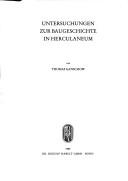
ISBN: 3774923795 9783774923799 Year: 1989 Volume: 30 Publisher: Bonn Habelt
Abstract | Keywords | Export | Availability | Bookmark
 Loading...
Loading...Choose an application
- Reference Manager
- EndNote
- RefWorks (Direct export to RefWorks)

ISBN: 8870628078 9788870628074 Year: 1993 Volume: 6 Publisher: Roma Bretschneider
Abstract | Keywords | Export | Availability | Bookmark
 Loading...
Loading...Choose an application
- Reference Manager
- EndNote
- RefWorks (Direct export to RefWorks)
Excavations (Archaeology) --- Congresses --- Herculaneum (Extinct city) --- -Archaeological digs --- Archaeological excavations --- Digs (Archaeology) --- Excavation sites (Archaeology) --- Ruins --- Sites, Excavation (Archaeology) --- Archaeology --- Italy --- -Herculaneum (Extinct city) --- -Ercolano (Extinct city) --- Herculaneum (Ancient city) --- Antiquities --- Conferences - Meetings --- -Italy --- -Congresses --- Archaeological digs --- Ercolano (Extinct city) --- Congresses. --- Excavations (Archaeology) - Italy - Herculaneum (Extinct city) - Congresses --- Herculaneum (Extinct city) - Congresses
Book
ISBN: 1841719749 9781841719740 Year: 2006 Volume: 1542 Publisher: Oxford Archaeopress
Abstract | Keywords | Export | Availability | Bookmark
 Loading...
Loading...Choose an application
- Reference Manager
- EndNote
- RefWorks (Direct export to RefWorks)
Suburban homes --- History --- Campania (Italy) --- Pompeii (Extinct city) --- Herculaneum (Extinct city) --- Antiquities --- Social life and customs --- Social archaeology --- History. --- Villas --- Dwellings --- Archaeology --- Methodology --- Stabiae (Extinct city) --- Stabiae (Ancient city) --- Italy --- Pompei (Extinct city) --- Pompeii (Ancient city) --- Ercolano (Extinct city) --- Herculaneum (Ancient city) --- Regione Campania (Italy) --- Campanie (Italy) --- Kampania (Italy) --- Campanien (Italy) --- Antiquities. --- Suburban homes - Italy - Campania - History --- Campania (Italy) - Antiquities --- Campania (Italy) - Social life and customs
Multi
ISSN: 15903869 ISBN: 9782918887027 2918887021 2918887390 Year: 1968 Volume: 35 3 Publisher: Naples Centre Jean Bérard
Abstract | Keywords | Export | Availability | Bookmark
 Loading...
Loading...Choose an application
- Reference Manager
- EndNote
- RefWorks (Direct export to RefWorks)
Dans cet ouvrage, Magali Cullin-Mingaud apporte non seulement une étude des ateliers de vanniers de Pompéi reconnus ou fouillés dans le cadre du programme « Archéologue de l'artisanat antique» développé par le Centre Jean Bérard et le Centre Camille Jullian grâce à des financements du ministère des Affaires étrangères et de l'Agence nationale de la recherche (projet Artifex), mais aussi une synthèse sur l'artisan de la vannerie. Mettant en œuvre à la fois les sources écrites, iconographiques et archéologiques, elle offre un panorama complet de cet artisan méconnu. En partant des matières premières et du savoir-faire de l'artisan, les techniques de fabrication et les réalisations pratiques sont identifiées et analysées grâce aux reconstitutions effectuées par Guy Barbier, vannier Meilleur Ouvrier de France. On dispose donc désormais d'un ouvrage quasiment exhaustif sur l'artisanant de la vannerie à l'époque romaine.
Wickerwork --- Travail de l'osier --- Basket making --- Basketwork --- Torre Annunziata (Italy) --- Excavations (Archaeology) --- Pompeii (Extinct city) --- Herculaneum (Extinct city) --- Antiquities, Roman --- Archaeological digs --- Archaeological excavations --- Digs (Archaeology) --- Excavation sites (Archaeology) --- Ruins --- Sites, Excavation (Archaeology) --- Archaeology --- Basketry --- Decorative arts --- Basketmaking --- Osiers --- Weaving --- Raffia work --- Pompei (Extinct city) --- Pompeii (Ancient city) --- Italy --- Ercolano (Extinct city) --- Herculaneum (Ancient city) --- Torre Annunziata, Italy --- Antiquities, Roman. --- Antiquities --- History --- Histoire --- Campania (Italy) --- Campanie (Italie) --- Antiquités romaines --- Regions & Countries - Europe --- History & Archaeology --- fouille archéologique --- Antiquité --- artisanat --- archéologie --- vannerie
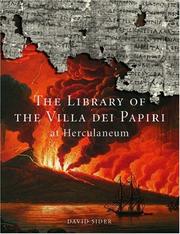
ISBN: 0892367997 9780892367993 Year: 2005 Publisher: Los Angeles : J. Paul Getty museum,
Abstract | Keywords | Export | Availability | Bookmark
 Loading...
Loading...Choose an application
- Reference Manager
- EndNote
- RefWorks (Direct export to RefWorks)
The eruption of Mt. Vesuvius that destroyed Pompeii in A.D. 79 also buried nearby Herculaneum. Over time the location of the small town was forgotten. Shortly after its rediscovery in the 1730s, excavations--more likely treasure hunts--were organized that unearthed ancient sculptures that had survived the disaster. The richest finds were from a villa that came to be called the Villa dei Papiri, because it also yielded upward of a thousand papyrus rolls--the only library ever to have been recovered from the classical world. To the great excitement of contemporaries, the papyri held out the tantalizing possibility of the rediscovery of lost masterpieces by classical writers. Written for the general reader, this introduction to the ancient library describes the long and difficult history of attempts to unwind the damaged rolls. Sider discusses the texts that have been deciphered and puts them in the context of literacy and Roman society of the time. He describes the how the ancient books were created from papyrus, and provides an account of attitudes toward books in Greece and Rome. He also surveys the private and civic libraries of the ancient world. This thoroughly researched and engaging book will be enjoyed by any reader with an interest in classical studies.
Book history --- Archeology --- Herculaneum --- Private libraries --- Manuscripts, Greek (Papyri) --- Bibliothèques privées --- Papyrus grecs --- Piso Caesoninus, Lucius Calpurnius --- Library. --- Villa of the Papyri (Herculaneum) --- Herculaneum (Extinct city) --- Herculanum (Ville ancienne) --- 091.141 --- Papyri --- 091.141 Papyri --- Villa of the Papyri (Herculaneum). --- Herculaneum (Extinct city). --- Bibliothèques privées --- Home libraries --- Libraries, Private --- Libraries --- Book collectors --- Caesoninus, Lucius Calpurnius Piso --- Piso, L. Calpurnius --- Ercolano (Extinct city) --- Herculaneum (Ancient city) --- Italy --- Antiquities --- papyri [manuscripts] --- bookstocks --- Manuscripts [Greek ] (Papyri) --- Private libraries - Italy - Herculaneum (Extinct city) --- Manuscripts, Greek (Papyri) - Italy - Herculaneum (Extinct city) --- Piso Caesoninus, Lucius Calpurnius - Library.
Book
ISSN: 15903869 ISBN: 9782728308910 9782918887058 2728308918 Year: 2010 Volume: 344 34 Publisher: Rome : Ecole française de Rome,
Abstract | Keywords | Export | Availability | Bookmark
 Loading...
Loading...Choose an application
- Reference Manager
- EndNote
- RefWorks (Direct export to RefWorks)
Stores, Retail --- Artisans --- Architecture and merchants --- Magasins --- Architecture et commerçants --- Herculaneum (Extinct city) --- Herculanum (Ville ancienne) --- Commerce --- History --- History. --- Architecture et commerçants --- Retail stores --- Shops --- Commercial buildings --- Retail trade --- Shopping centers --- Artizans --- Craftsmen --- Craftspeople --- Craftspersons --- Skilled labor --- Cottage industries --- Merchants and architecture --- Merchants --- Ercolano (Extinct city) --- Herculaneum (Ancient city) --- Italy --- Antiquities --- Stores, Retail - Italy - Herculaneum (Extinct city) --- Artisans - Italy - Herculaneum (Extinct city) --- Architecture and merchants - Italy - Herculaneum (Extinct city) --- Herculaneum (Extinct city) - Commerce - History --- Petits commerces --- Ateliers --- Artisanat --- Fouilles archéologiques --- Herculanum (ville ancienne) --- Pompéi (ville ancienne) --- Italie --- Conditions économiques
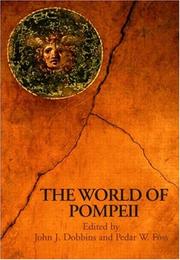
ISBN: 0415173248 9780415173247 9780415475778 0415475775 0203866193 1134689748 1134689756 1282153153 9786612153150 Year: 2008 Publisher: London : Routledge,
Abstract | Keywords | Export | Availability | Bookmark
 Loading...
Loading...Choose an application
- Reference Manager
- EndNote
- RefWorks (Direct export to RefWorks)
Excavations (Archaeology) - Italy - Pompeii (Extinct city) --- Excavations (Archaeology) - Italy - Herculaneum (Extinct city) --- Excavations (Archaeology) - Italy - Naples, Bay of, Region --- Pompeii (Extinct city) --- Herculaneum (Extinct city) --- Naples, Bay of, Region (Italy) - Antiquities, Roman --- Excavations (Archaeology) --- Archaeological digs --- Archaeological excavations --- Digs (Archaeology) --- Excavation sites (Archaeology) --- Ruins --- Sites, Excavation (Archaeology) --- Archaeology --- Naples, Bay of, Region (Italy) --- Naples, Bay of (Italy) --- Bay of Naples (Italy) --- Golfo di Napoli (Italy) --- Gulf of Naples (Italy) --- Naples, Gulf of (Italy) --- Ercolano (Extinct city) --- Herculaneum (Ancient city) --- Italy --- Pompei (Extinct city) --- Pompeii (Ancient city) --- Antiquities, Roman --- Antiquities, Roman. --- Antiquities --- Pompeii (Extinct city). --- Herculaneum (Extinct city). --- Pompéi (Ville ancienne) --- Herculanum (Ville ancienne)
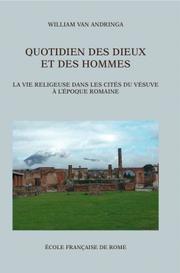
ISBN: 9782728308439 2728308438 Year: 2009 Volume: 337 Publisher: Rome : École française de Rome,
Abstract | Keywords | Export | Availability | Bookmark
 Loading...
Loading...Choose an application
- Reference Manager
- EndNote
- RefWorks (Direct export to RefWorks)
Pompeii (Extinct city) --- Herculaneum (Extinct city) --- Campania (Italy) --- Rome --- Pompéi (Ville ancienne) --- Herculanum (Ville ancienne) --- Campanie (Italie) --- Religious life and customs. --- Antiquities --- Religion --- Vie religieuse --- Antiquités --- Vesuvius Region (Italy) --- Religious life and customs --- Antiquities, Roman --- Antiquities, Roman. --- Pompéi (Ville ancienne) --- Antiquités --- Pompei (Extinct city) --- Pompeii (Ancient city) --- Italy --- Ercolano (Extinct city) --- Herculaneum (Ancient city) --- Vesuvius (Italy) --- Antiquities. --- Pompeii (Extinct city) - Religious life and customs --- Herculaneum (Extinct city) - Religious life and customs --- Vesuvius Region (Italy) - Religious life and customs --- Vesuvius Region (Italy) - Antiquities, Roman --- Religion romaine -- Italie -- Pompéi (ville ancienne) Religion romaine -- Italie -- Herculanum (ville ancienne) Pompéi (ville ancienne ) -- Vie religieuse Herculanum (ville ancienne ) -- Vie religieuse --- Religion romaine --- Pompéi (ville ancienne ) --- Herculanum (ville ancienne ) --- Italie --- Pompéi (ville ancienne)
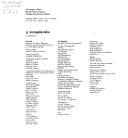
ISBN: 9053494537 9053494367 9789053494530 Year: 2003 Volume: *7 Publisher: Gent Snoeck
Abstract | Keywords | Export | Availability | Bookmark
 Loading...
Loading...Choose an application
- Reference Manager
- EndNote
- RefWorks (Direct export to RefWorks)
tgegeven n.a.v. de tentoonstelling in de Koninklijke Musea voor Kunst en Geschiedenis te Brussel, van 9 oktober tot 8 februari 2004.
kunstgeschiedenis (algemeen) --- archeologie --- oudheid --- 1ste eeuw --- 18de eeuw --- 19de eeuw --- Pompeï --- Rome --- Herculaneum --- Oplontis --- Excavations (Archaeology) --- archaeological objects --- History of civilization --- Art --- local history [discipline] --- anno 1-99 --- Pompeii --- Pompeii (Extinct city) --- Herculaneum (Extinct city) --- Torre Annunziata (Italy) --- Italy --- Pompéi (Ville ancienne) --- Herculanum (Ville ancienne) --- Torre Annunziata (Italie) --- Italie --- Exhibitions. --- Antiquities, Roman --- Antiquities --- Expositions --- Antiquités romaines --- Antiquités --- (069) --- 7.032.7 --- Archeologie ; de Vesuviussteden ; en invloeden van de opgravingen --- Europalia 2003 ; Italië --- Romeinse kunst ; Pompeji ; Herculaneum ; Oplontis --- Tentoonstellingscatalogi ; Koninklijke Musea voor Schone Kunsten van België ; Brussel --- Archaeological digs --- Archaeological excavations --- Digs (Archaeology) --- Excavation sites (Archaeology) --- Ruins --- Sites, Excavation (Archaeology) --- Archaeology --- (Musea. Collecties) --- Kunstgeschiedenis ; Oud-Italiaanse, etruskische, romeinse kunst --- Pompei (Extinct city) --- Pompeii (Ancient city) --- Ercolano (Extinct city) --- Herculaneum (Ancient city) --- Torre Annunziata, Italy --- Exhibitions --- 937 --- kunst --- Plinius de Jongere --- Pompeji --- Tacitus --- Vesuvius --- 937 <064> --- 937 <064> Geschiedenis van Rome tot 476--Tentoonstellingscatalogi. Museumcatalogi --- Geschiedenis van Rome tot 476--Tentoonstellingscatalogi. Museumcatalogi --- Vulkaanuitbarstingen --- Romeinse Rijk --- Vulkaanuitbarsting --- geschiedenis en archeologie --- Excavations (Archaeology) - Italy - Herculaneum (Extinct city) - Exhibitions. --- Excavations (Archaeology) - Italy - Pompeii (Extinct city) - Exhibitions. --- Excavations (Archaeology) - Italy - Torre Annunziata - Exhibitions. --- 1ste eeuw. --- 18de eeuw. --- 19de eeuw. --- Pompeï. --- Rome. --- Herculaneum. --- Oplontis.
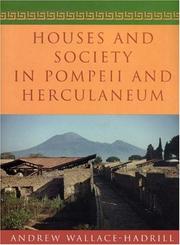
ISBN: 0691069875 9780691029092 0691029091 9780691069876 Year: 1994 Publisher: Princeton (N.J.) : Princeton university press,
Abstract | Keywords | Export | Availability | Bookmark
 Loading...
Loading...Choose an application
- Reference Manager
- EndNote
- RefWorks (Direct export to RefWorks)
Few sources reveal the life of the ancient Romans as vividly as do the houses preserved by the eruption of Vesuvius. Wealthy Romans lavished resources on shaping their surroundings to impress their crowds of visitors. The fashions they set were taken up and imitated by ordinary citizens. In this illustrated book, Andrew Wallace-Hadrill explores the rich potential of the houses of Pompeii and Herculaneum to offer new insights into Roman social life. Exposing misconceptions derived from contemporary culture, he shows the close interconnection of spheres we take as discrete: public and private, family and outsiders, work and leisure. Combining archaeological evidence with Roman texts and comparative material from other cultures, Wallace-Hadrill raises a range of new questions. How did the organization of space and the use of decoration help to structure social encounters between owner and visitor, man and woman, master and slave? What sort of "households" did the inhabitants of the Roman house form? How did the world of work relate to that of entertainment and leisure? How widely did the luxuries of the rich spread among the houses of craftsmen and shopkeepers? Through analysis of the remains of over two hundred houses, Wallace-Hadrill reveals the remarkably dynamic social environment of early imperial Italy, and the vital part that houses came to play in defining what it meant to live as a Roman.
Material culture --- Architecture, Domestic --- Culture matérielle --- Architecture domestique --- Herculanum (Ville ancienne) --- Pompeii (Extinct city) --- Herculaneum (Extinct city) --- Pompéi (Ville ancienne) --- Social life and customs. --- Social life and customs --- Buildings, structures, etc. --- Moeurs et coutumes --- Constructions --- Buildings, structures, etc --- -Architecture, Domestic --- -Material culture --- -Culture --- Folklore --- Technology --- Architecture, Rural --- Domestic architecture --- Home design --- Houses --- One-family houses --- Residences --- Rural architecture --- Villas --- Architecture --- Dwellings --- -Herculaneum (Extinct city) --- -Pompeii (Extinct city) --- -Pompei (Extinct city) --- Pompeii (Ancient city) --- Italy --- Ercolano (Extinct city) --- Herculaneum (Ancient city) --- Antiquities --- -Buildings, structures, etc --- Culture matérielle --- Pompéi (Ville ancienne) --- Culture --- Pompei (Extinct city) --- Centre [Région] (Belgique) --- Coal mines and mining --- History --- Architecture [Domestic ] --- Pompeii (Extinct city) - Social life and customs. --- Herculaneum (Extinct city) - Social life and customs. --- Pompeii (Extinct city) - Buildings, structures, etc. --- Herculaneum (Extinct city) - Buildings, structures, etc. --- Material culture - Italy - Pompeii (Extinct city) --- Material culture - Italy - Herculaneum (Extinct city) --- Architecture, Domestic - Italy - Pompeii (Extinct city) --- Architecture, Domestic - Italy - Herculaneum (Extinct city) --- Pompeii (Extinct city) - Social life and customs --- Herculaneum (Extinct city) - Social life and customs --- Herculaneum (Extinct city) - Buildings, structures, etc
| Listing 1 - 10 of 12 | << page >> |
Sort by
|

 Search
Search Feedback
Feedback About UniCat
About UniCat  Help
Help News
News